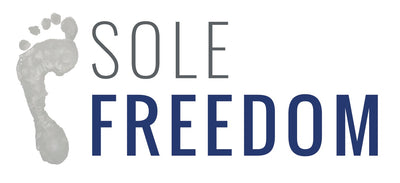Barefoot shoes (aka Natural shoes) are more than just a footwear trend; they’re a movement toward reconnecting our feet with the ground. Despite their growing popularity, many misconceptions persist about what barefoot shoes are and how they work. Let’s dive into some of the biggest myths and set the record straight.
1. “Barefoot Shoes Lack Support and Are Unsafe”
One of the most common beliefs is that because barefoot shoes offer no support, it makes them unsafe and likely to cause injury. In reality, barefoot shoes promote natural foot movement by letting your feet do what they’re designed for: absorbing impact and stabilizing your body. With a minimal sole, these shoes help strengthen muscles, improve posture, and improve balance over time.
That said, it’s essential to transition gradually. If your feet are used to highly cushioned shoes, a sudden switch can lead to strain. Many injuries attributed to barefoot shoes happen when people transition too quickly. Think of it like lifting weights—you wouldn’t start with the heaviest weight on day one. With a gradual transition, barefoot shoes can actually help build foot strength, not compromise it.
2. “Barefoot Shoes Are Only for Running”
While barefoot shoes gained fame through the barefoot running movement, they’re versatile and suitable for various activities. Whether you’re running, walking, hiking, or working out, barefoot shoes can adapt. In fact, many people use them for everyday wear because they provide a sense of freedom that conventional shoes can’t match. Modern barefoot shoes come in styles suitable for casual wear, office environments, and outdoor activities, so there’s no need to be an ultra-marathoner to benefit.
3. “Only Certain Foot Types Can Wear Barefoot Shoes”
Some people think barefoot shoes are only for individuals with flat feet or specific foot shapes, but that’s far from the truth. Barefoot shoes are designed to support the natural shape of any foot type. They encourage stronger feet and more robust arches by engaging muscles often underused in traditional footwear.
For those with high arches or flat feet, barefoot shoes can be especially beneficial because they encourage active use of the feet, which can help build strength over time. However, transitioning may take a little patience, as your feet adjust to the newfound freedom and movement.
4. “Barefoot Shoes Are Uncomfortable or Less Durable”
When people picture barefoot shoes, they often imagine a thin piece of rubber with no protection, especially on rough or uneven surfaces. Quality barefoot shoes, however, use high-grade materials designed to handle a variety of terrains comfortably. Many brands engineer their barefoot shoes with rugged soles that still allow flexibility, so you can feel the ground without discomfort.
In terms of durability, barefoot shoes can last just as long as traditional shoes. Since they’re often built with fewer, more flexible materials, they mold to your foot over time, which can enhance comfort and longevity.
5. “They Look Odd or Are Only for Minimalists”
Barefoot shoes have come a long way in terms of style. Gone are the days when barefoot shoes were limited to quirky designs with toe separations. Today’s barefoot shoes come in various styles that can pass as everyday sneakers, dress shoes, or even business-casual footwear. Many people wear barefoot shoes because of the comfort and health benefits—not because they want to make a minimalist statement.
6. “Barefoot Shoes Cause Injury”
While barefoot shoes can lead to soreness initially, especially in the muscles and tendons that aren’t used to natural movement, they don’t inherently cause injuries. Injuries usually happen when people go from traditional footwear to barefoot shoes too quickly. A gradual transition, starting with shorter periods of wear and increasing over time, helps prevent strain.
Start by wearing them indoors, on short walks, or during light activities to let your feet adjust to the new movement pattern. Over time, you’ll likely notice improved foot strength, balance, and possibly even fewer injuries as your feet become more resilient.
Embrace the Freedom of Barefoot Shoes
Barefoot shoes are about giving your feet the freedom to move as they were meant to. Yes, there’s a period of adjustment, but with a gradual transition, barefoot shoes can help your feet grow stronger, your posture improve, and your movement become more natural. So, if you’ve been considering trying barefoot shoes but hesitating because of these misconceptions, give them a chance—you may find yourself joining the barefoot revolution!
For Canada's largest selection of shoes that respect the function of your feet, check out what we carry at Sole Freedom.


Comment (1)
Hi,
Thanks for the article.
Would you mind posting your references and articles supporting the arguments made in your post?
Just want to make sure that these are evidence based arguments and not just theoretical claims.